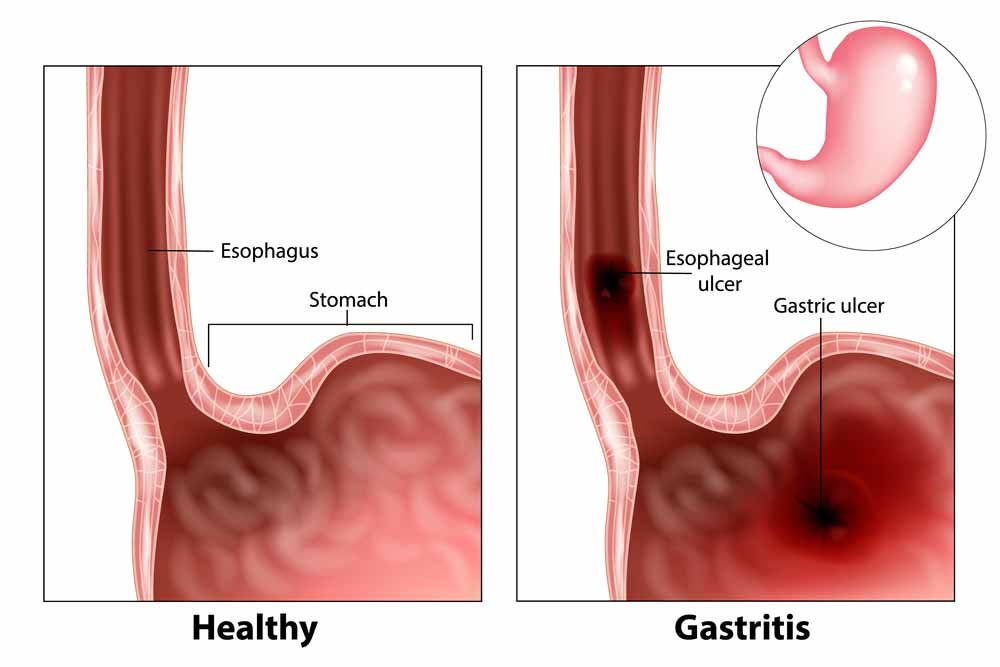How is gastritis treated?

An endoscopy is usually indicated when there is severe epigastric pain and bleeding through the mouth or the anus, or in case of chronic gastritis. In chronic gastritis, the mucosa of the gastric wall has a cobblestone appearance; in atrophic gastritis, the mucosal atrophy can be seen through the endoscope, and other findings may include bleeding, ulcers, and chronic/acute inflammatory changes.
After its diagnosis, acute gastritis is usually treated with dietary modifications and lifestyle changes. They sometimes help more than using medications. Another recommendation is to discontinue the use of NSAIDs. For acute pain, antacids can be used as an initial treatment and for acid hypersecretion. Proton pump inhibitors (PPIs) such as omeprazole/lansoprazole, and prokinetics (domperidone) are useful, too. If the patient has nausea or vomiting episodes, antiemetics such as metoclopramide can be useful.
In the case of symptomatic H. pylori infection, eradication therapy includes triple therapy or quadruple therapy. Triple therapy includes drugs such as PPIs plus amoxicillin/metronidazole plus clarithromycin. Quadruple therapy consists of a PPI, bismuth, tetracycline, and amoxicillin/metronidazole. If these therapies fail, rescue therapy can be done with PPI, ofloxacin, and amoxicillin. Histamine H2 antagonists may also help to decrease the secretion of acid in these patients.

